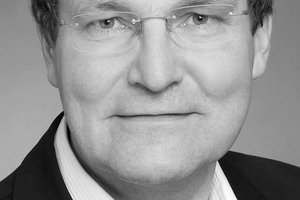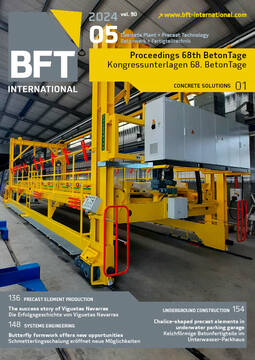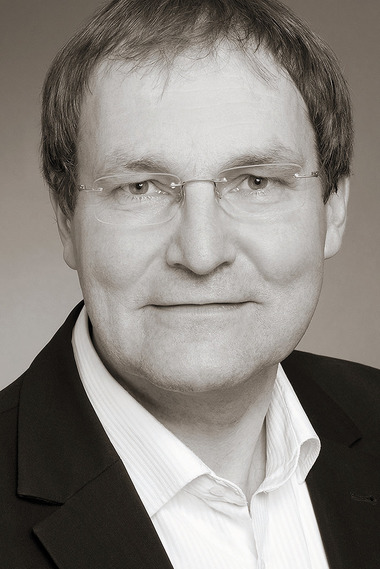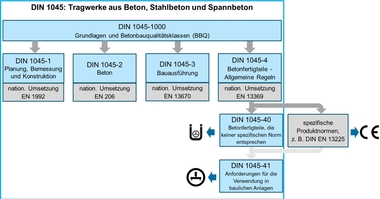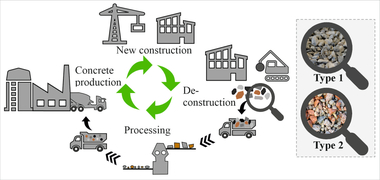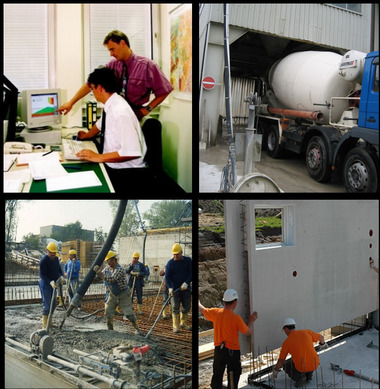New ways for using recycled aggregate in concrete construction
With publication of DIN 1045-2:2023-08, the technological concrete regulations for use of recycled aggregate were significantly extended in comparison to DAfStb code of practice “Concrete According to DIN EN 206-1 and DIN 1045-2 with Recycled Aggregate According to DIN EN 12620” (issue of September 2010). This development now offers new possibilities for using recycled aggregate in concrete construction. With the extended regulations, which now also comprise the use of fine recycled aggregate, the aspect of resource conservation of natural aggregate was among other factors also taken into account.
Concretes with recycled aggregates according with DIN EN 12620
were transferred to the new concept of concrete construction quality classes (BBQ) in accordanc with DIN 1045-1000:2023-08.
As before, the higher-ranking technological concrete regulations are also contained in DIN 1045-2, section 5.2.3.4 “Recycled Aggregate” − as is the case for all other regulations in the normative annex E, section E.3 “Regulations for Use of Recycled Aggregate”.
In future, concrete with recycled aggregate will be allocated to concrete
classes BK-N (normal requirements), BK-E (increased requirements) and BK-S (special requirements to be specified) as follows:
Concrete class BK-N: concrete with recycled aggregate ≤ 25 % volume proportion; exchange of coarse aggregate (relative to the total aggregate); adherence to the general requirements placed on recycled aggregate according to E.3.1;
Concrete class BK-E: concrete with recycled aggregate > 25 % volume proportion; exchange of coarse aggregate (relative to the total aggregate) or moisture class WA; adherence to the general requirements placed on recycled aggregate according to E.3.1 and the special requirements according to E.3.2;
Concrete class BK-S: concrete with recycled aggregate deviating from K-N and BK-E.
Use of recycled aggregate for prestressed concrete and lightweight concrete continues to be forbidden. Furthermore, exposure classes XA2, XA3 and XM must be excluded because test results have not yet become available for use in these classes.
In addition to the adaptation of terms to DIN EN 12620 regarding “fine” and “coarse” grades of aggregate, and to a number of changes to the regulatory requirements for recycled aggregate (Table E.3), the regulations for moisture class WA in concrete class BK-E (Table E.5) have been specified in greater detail.


